Editor’s note: this was part of Day Five in North Korea.
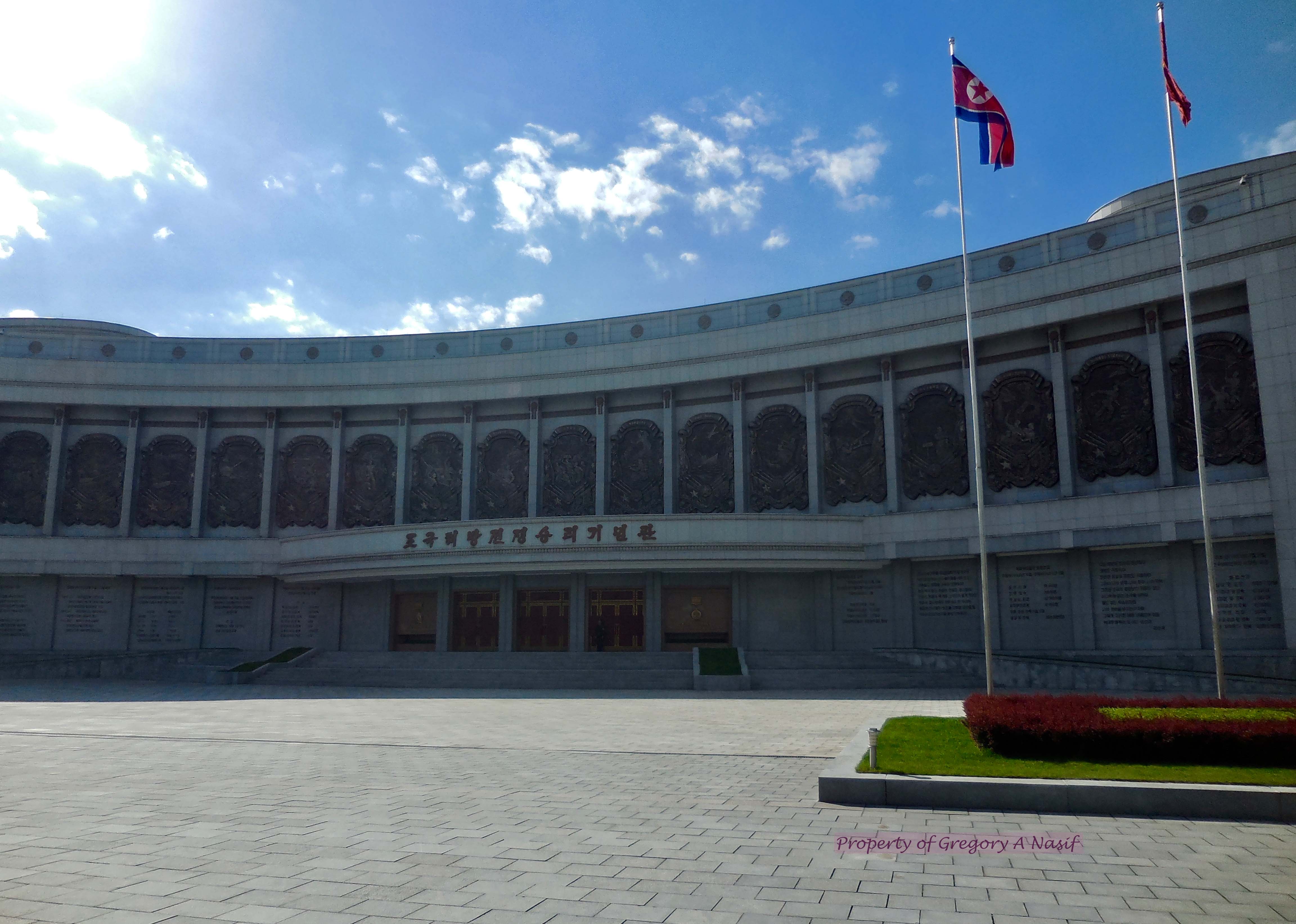
On Wednesday, May 6th, 2016, I visited the Victorious Fatherland Liberation War Museum, or Victorious War Museum for short, in Pyongyang, North Korea. This site is nothing more or less than the anchor of the reclusive nation’s false understanding and deliberate misrepresentation of the Korean War.

Victorious Fatherland Liberation War Museum, Pyongyang.
It was a bizarre and troubling experience.
Here, at last, would be the final, full-throated, heavy dose of propaganda for which we had all done our best to prepare. There was no precedent for the experience, not even the earlier tours to the North Korean side of the demilitarized zone or the resting halls of the two deceased leaders. The military museum would outdo all of that. We were given enough false information for a Quentin Tarantino alternate-history flick, told by people who genuinely believed it (with a similar adoration of violence).
The layout of this museum looked eerily like its South Korean counterpart in Seoul, which I visited with friends in 2015. A circle of flags surround the front plaza, facing south, with military relics parked on the right-hand side. Both even have a stationed battleship.

Victorious Fatherland Liberation War, Pyongyang (source).
South Korean War Museum, Seoul (Wikimedia)
There were several more comparisons that go beyond basic appearance.
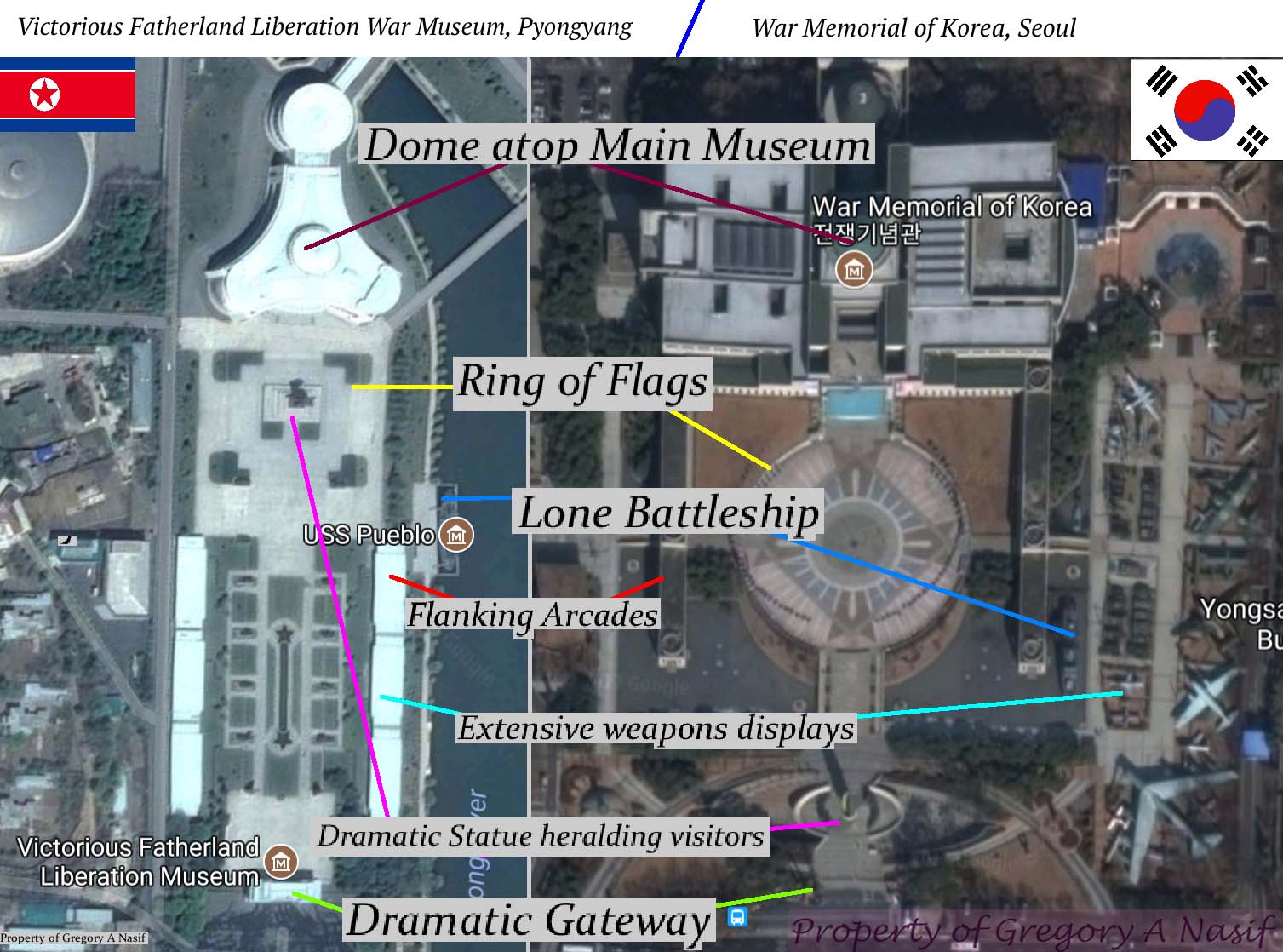
Left: Victorious War Museum, Pyongyang, North Korea Right: The War Memorial of Korea, Seoul, South Korea
The ring of flags, seen in the two pictures up above, contained a small but critical difference for the two Koreas. In Seoul, there are 26 flags, for every nation that gave blood in defense of South Korea. In Pyongyang, there are only two flags. That of North Korea itself, and the Worker’s Party of Korea (the Communist Party). From the beginning, it was clear China and the USSR would not be featured in this alternate history museum, nor would they receive more than a token voice mention for their service in fighting for their ally.
In layouts, the structures in Seoul and Pyongyang were eerily similar, but that was it. One is a renowned museum telling a heart-wrenching story of a Civil War forced on struggling people by outside tyrants. The other was a peculiar propaganda hall full of made-up stories.
On the front face of Pyongyang’s “museum” were a series of murals. One depicted the communist “liberation” of Seoul. Why the North Koreans were boasting of conquering a city they no longer control, while still claiming to have won the war, is beyond me. But this was only the beginning.

The “Liberation” of Seoul
We were introduced to our tour guide, a pretty, feisty young woman in full military garb and a gift for propaganda. “Where are you from?” she asked us. When it was my turn to answer, she lit up like propaganda village.
“Ohh, America! Here you will see the treachery of your country!”
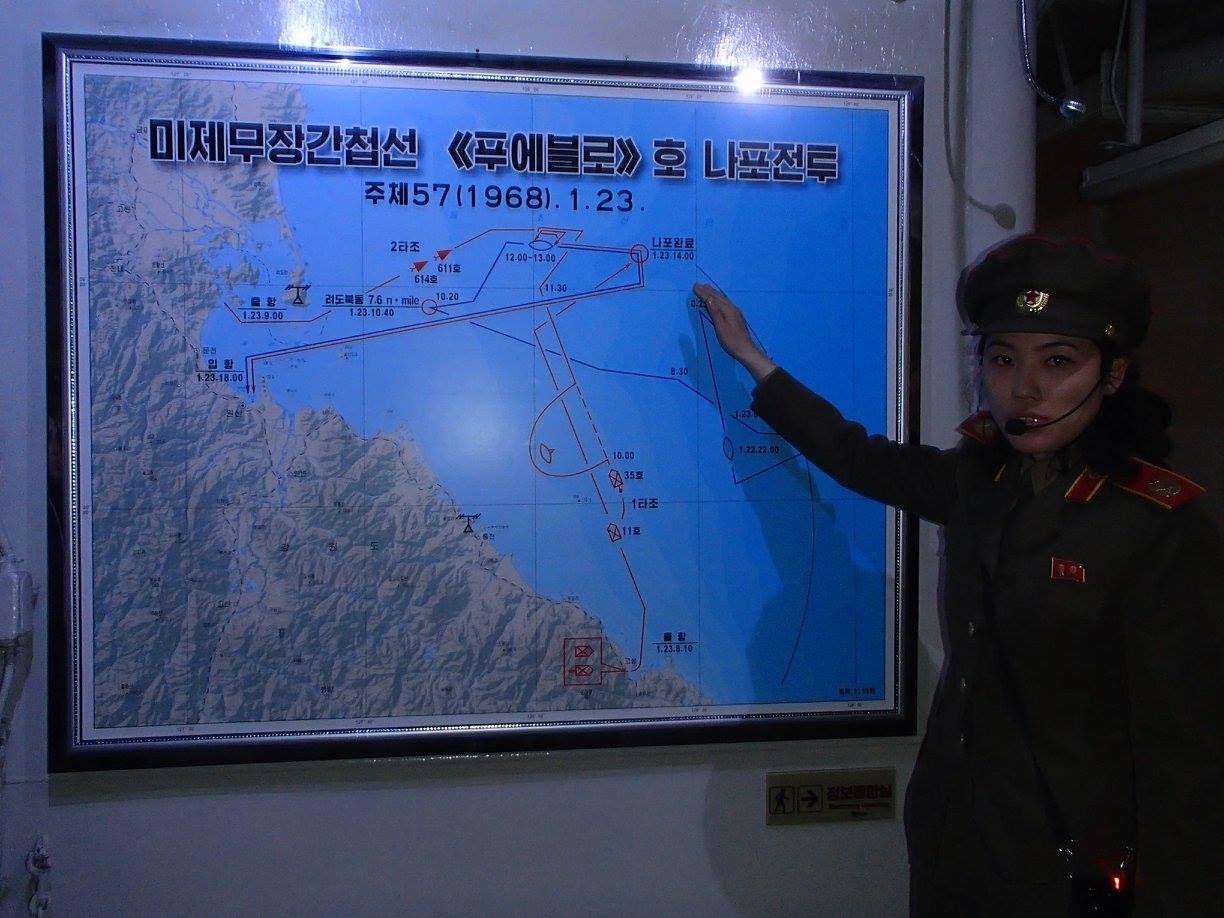
Our lovable tour guide. (Photo courtesy of Roger Bell)
As we walked along a lengthy procession of captured UN weapons toward the U.S.S. Pueblo, the tour guide began her heavily distorted dissertation, briefly describing the immoral deceit of US Naval seamen who had been caught and captured on the Pueblo spying on North Korea.

Onboard, we were shown through the ship and presented to a video embellishing the capture of the sailors, the apologies they were forced to make, and the mercy of the North Koreans who let them return home.

The ship was surreal – it was the first time on a US seaborne vessel for this son of a naval veteran.

We were then carted off to the main museum, where all photography was forbidden (I’ve borrowed some photos from news organizations and matched them to my own memories). The entrance hall was lavish – as if it were the atrium of Kim Il-Sung’s personal home. It was even adorned with a massive statue of the General himself.

The statue of Kim Il-Sung (pictured) is off to the right. (Source)
A few days earlier, a tour guide had promoted the narrative that the South and the UN had “provoked” the war, basing his view entirely on one’s definition of the word “provoked” in a frustrating Q&A.
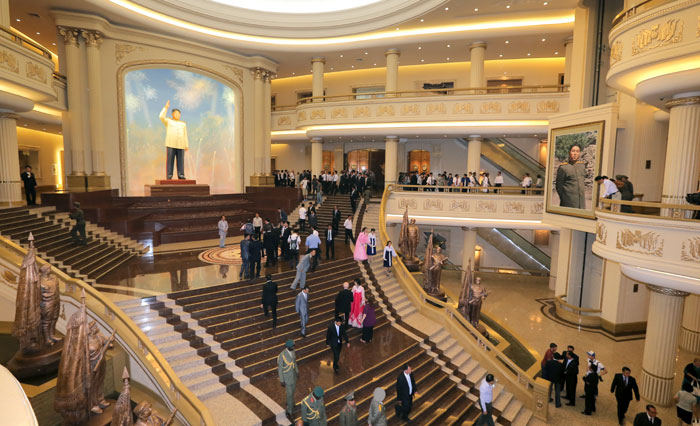
Source: Red Star Travel
In a small antechamber off the main hall, we watched a video whose narrator sounded rather like Ted Knight (the Justice League narrator), Who Provoked the Korean War?, which took the official DPRK narrative one step further.
Using shoddy, cherry-picked evidence, the video suggested that a South Korean puppet state, using the shield of the United Nations and with the United States in command, forcefully invaded north of the 38th Parallel on the morning of June 25th, 1950, in direct contradiction to the traditional, widely accepted narrative that the North invaded the South. In the alternate history presented to us, the video asserted that the UN allies invaded North Korea without provocation, advanced only two kilometers at their deepest, and were rerouted and forced back south in fifteen minutes. The tour group could not contain its laughter.
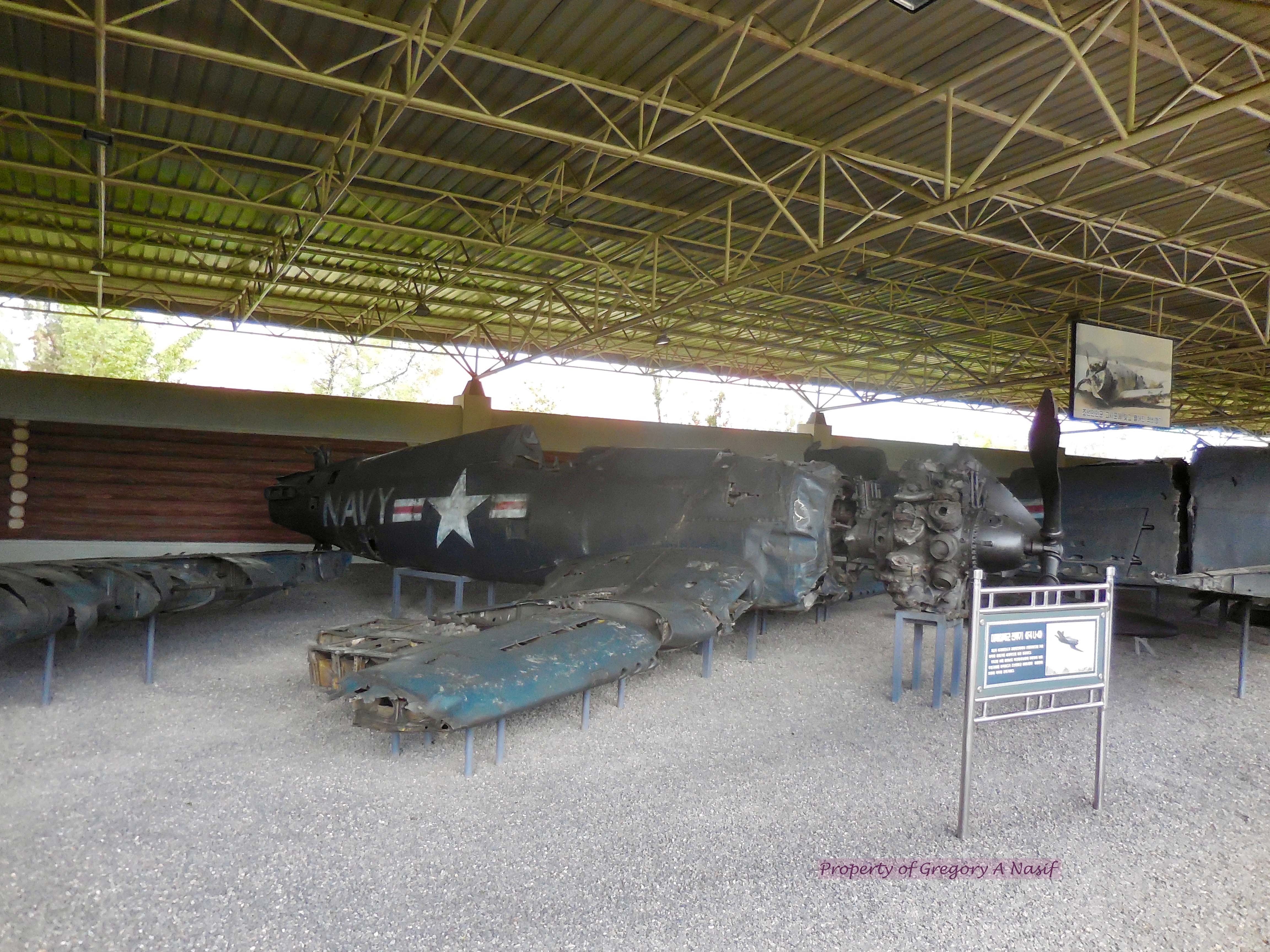
Downed US plane at the Victorious Fatherland Liberation War Museum, Pyongyang.
From there the video resumes the commonly accepted narrative that Northern forces penetrated deeply and quickly through South Korea, and it embellishes the moral decay and disillusionment of the allied POWs.
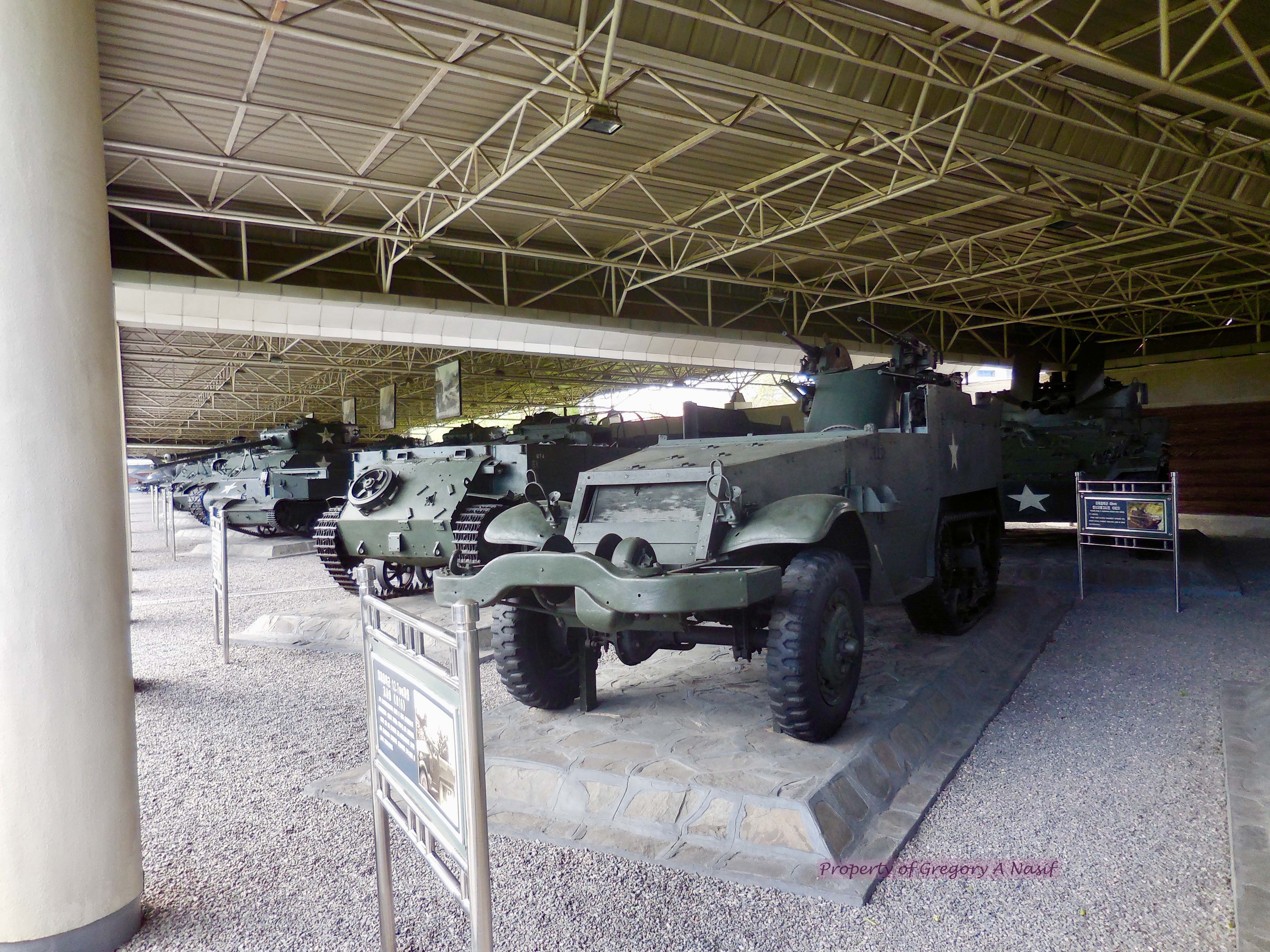
Captured UN weapons at the Victorious Fatherland Liberation War Museum, Pyongyang.
The story abruptly finished just when North Korean forces had surrounded Busan. There was no mention of the war continuing for three years with rapidly shifting fortunes. As far as new learner was concerned, the war lasted a month, ending in complete Northern victory.
“Here we tell you our side,” our tour guide has said a day earlier. The removed words were easily inferred: “and not theirs.”
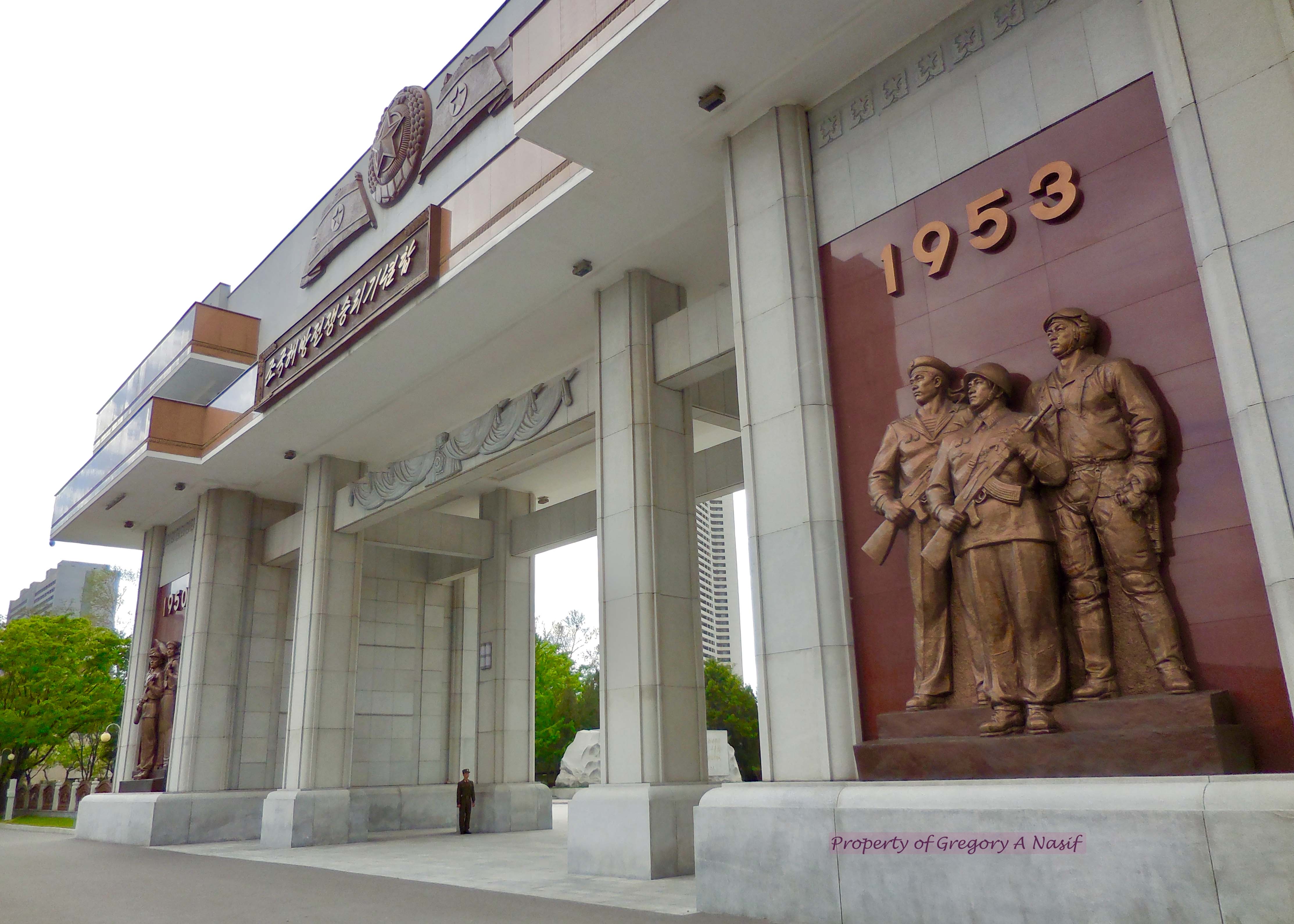
Other exhibits in the museum included models of the Korean wilderness and soldiers’ foxholes, and most prominently, a model display of American troops. Two were dead, with crows picking at their remains, and one standing, stereotypically tall, gangly, blond, blue-eyed, with big feet and a big nose, staring straight ahead, suffering something worse than death.

From a section deploring the UN troops. Source: The Atlantic
It is true that 21 allied soldiers defected during the war. The US military had not adopted training for psychological assaults on POWs, which US troops had not greatly encountered in World War II (as opposed to bodily torture), and the communists made the soldiers pay for that oversight.
Nonetheless, the vast majority of these men eventually returned home, whereas over 100,000 Chinese and Koreans refused to be repatriated to their communist-held homelands, insisting on going instead to Taiwan and South Korea, respectively, snubbing communism at a crucial opening juncture in the Cold War.
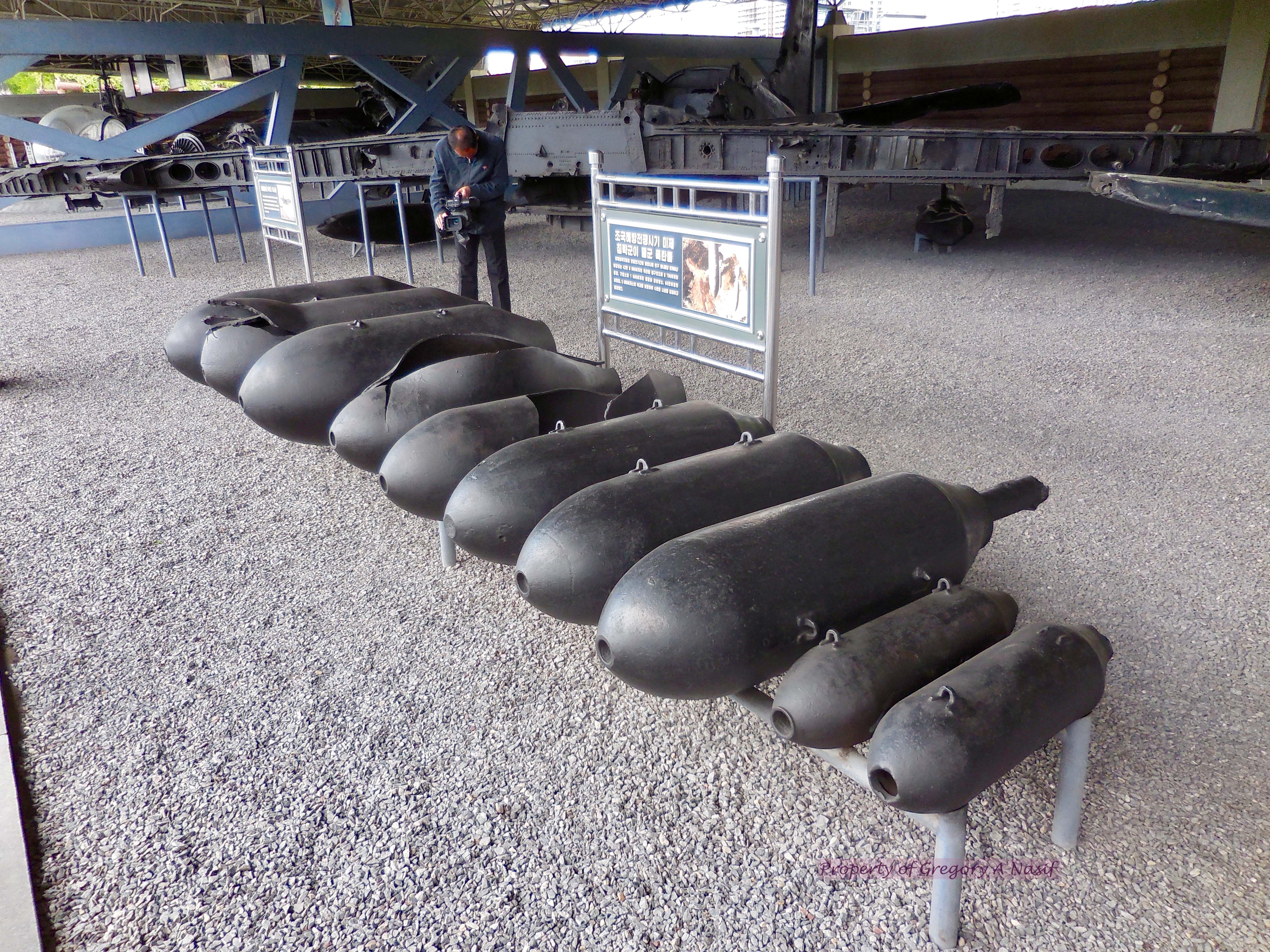
Captured weapons at the Victorious Fatherland Liberation War Museum, Pyongyang.
Knowing this helped me brush off these aggressive displays. But our guide was more difficult.
She boasted of Koreans liberating the peninsula town by town, as people celebrated and heralded the communists, happy to be rid of their American captors, eager to join Kim Il-sung’s cause. She spoke continuously without pauses, mostly keeping her eyes on me (there were twelve of us), constantly filling spaces with “you will learn! You will see!” The UN soldiers couldn’t match the spirit and passion of the communists, she insisted, as Koreans defected from South to North by the thousands, while UN soldiers scampered down the peninsula slaughtering women and children and destroying Korea, hence the ongoing poverty in the country sixty-five years later.
Remembering that the North Koreans committed horrific massacres in the southern lands they conquered, this propaganda was a bit much to listen to without a word from the other side. So when an opening came, we prepared to pounce.
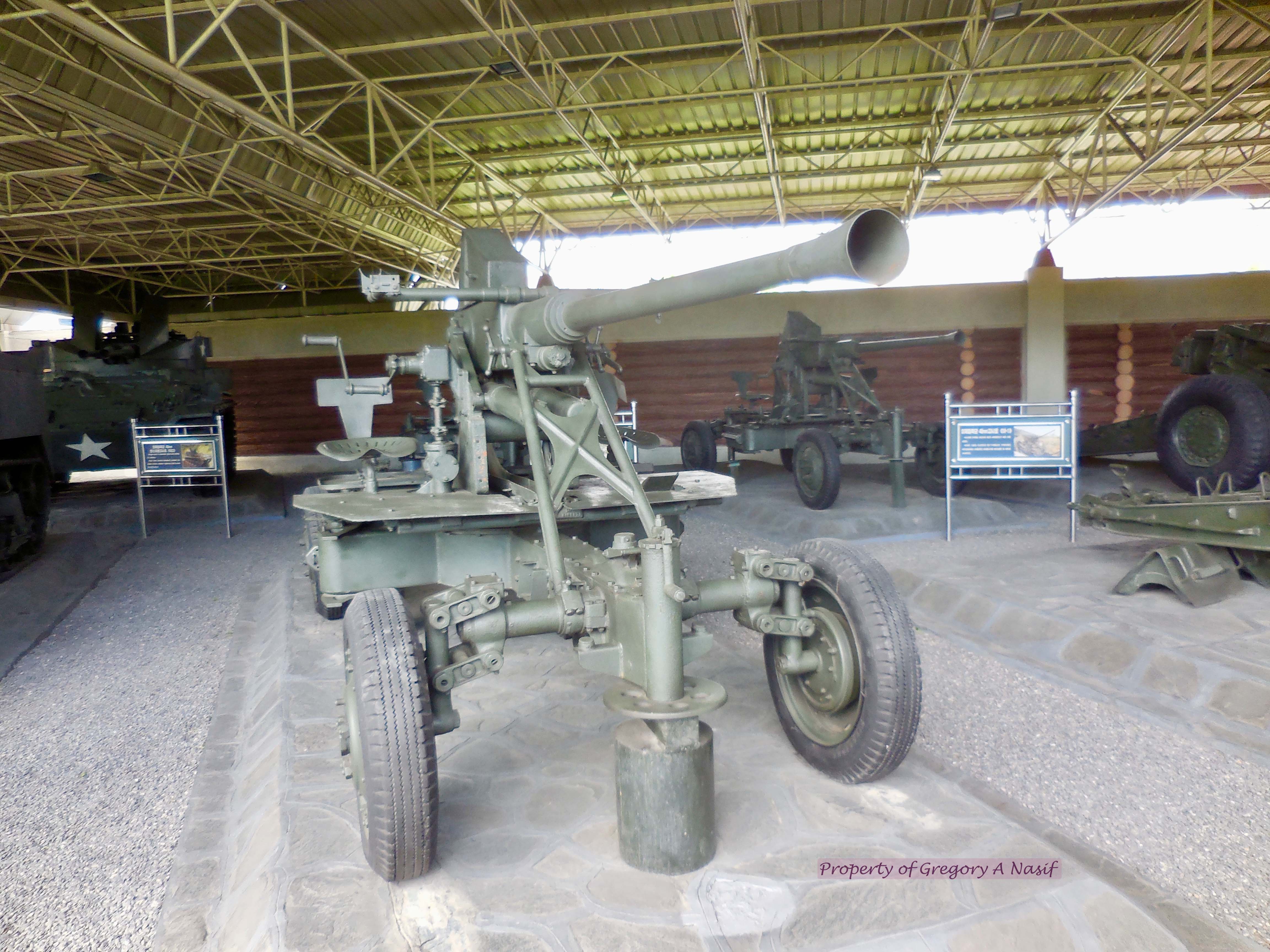
Captured UN weapons at the Victorious Fatherland Liberation War Museum, Pyongyang
Wrapping up her story, the guide barely touched on the Incheon Landing, the amphibious assault on the peninsula’s western riverbeds that cut the communist advance down from the trunk and reversed the fortunes of the war, only six months into what would become a three-year-long conflict.
“When the enemy landed at Incheon, our soldiers bravely took to the mountains to defend their homeland,” she tacked on the end of her explanation like a post-script. There was no mention that “taking to the mountain” meant abandoning all their conquests. Nor did she point out that the defense was a failure, and that allied soldiers forced the invaders all the way back to the border with China. And lastly, she ignored the elephant (or should I write panda) in the room, which Roger jumped on first as she turned toward the refreshments stand.
“What about the Chinese involvement?” he asked.
The guide, who clearly had hoped to avoid questions, cut off her attempt to point out the drink choices, and delivered a scripted response. “Well, actually the US imperialists were bombing China and Chinese villages and children as well, so to protect their country, Chinese troops also joined the effort to expel the US imperialists from the Asian continent.”

The New Testament aboard the U.S.S. Pueblo, possibly the only legal Bible in North Korea.
“So they did help, then?” Roger continued. “The Chinese did most of the fighting, right?”
The guide insisted that the Chinese only “helped,” that the bulk of the fighting was done by KPA soldiers with Kim Il-sung in command – a lie. On this we challenged her heavily, continuing debate over details such as battlefronts, POW exchanges, and basic facts. After flat-out lies, she would often change the subject, insisting that the next display would explain everything. “You ask a lot of questions!” she said to me at one point. “How about you buy me a coffee since you are making me work so much!” She would use these abrupt subject changes, beyond getting a free coffee, to avoid difficult answers. I still bought her a coffee.
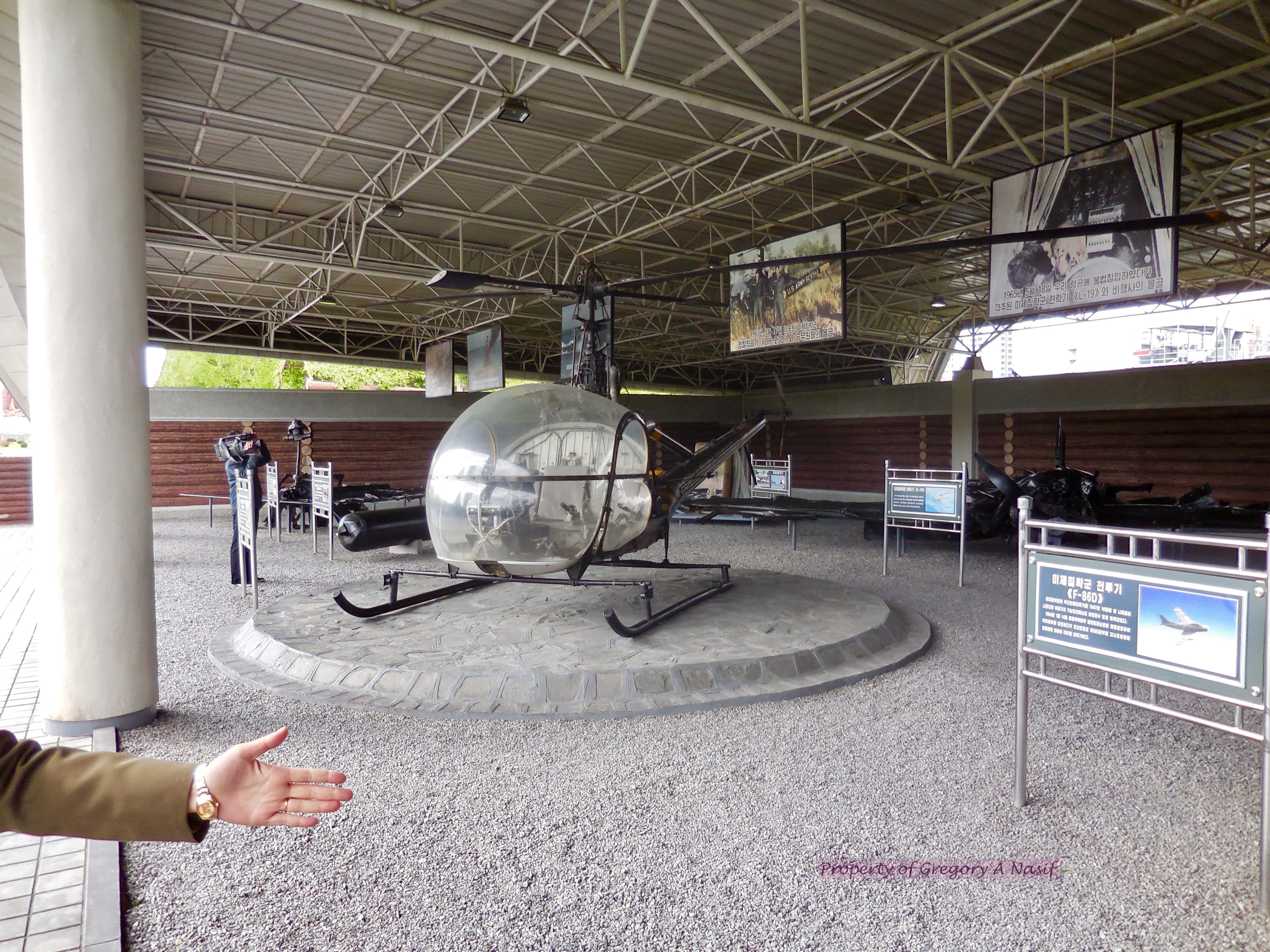
Captured helicopter at the Victorious War Museum, Pyongyang
Lastly, she would, in ongoing explanations of how she believed the war went, spring related questions on us. The Korean War began in June 1950 and ended in July 1953. When she sprung a pop quiz question on me on an elevator ride and I mixed up the months, she relished in my failure. Declaring to all that I clearly knew nothing of the war, she stated that I was a product of America’s propagandized “imperialist education.”
“You don’t even know when the American imperialists invaded!” she laughed. I fought back.
“You mean when the North invaded the South, right?”
“YOU SAW EVIDENCE!” she shrieked joyfully. I was incensed, but the elevator door had opened and the guide had moved on to more lies. Fellow travelers struggled to suppress their laughter.
In the dome chamber atop the museum was one of the most stunning paintings I had ever seen, encompassing the entire dome, ten meters high and at least 80 meters around. It was the most terrific painting of the (North’s interpretation of the) Battle of Taejon, which the guide said to us was briefly the capital of the South after the fall of Seoul in 1950 (I can’t find anything confirming or refuting this). The guide mocked me for asking if it was Seoul. “You clearly do not understand Korea!” Her ability to fluster her opponents was impressing me, and I began to imagine her doing very well as a talking head on cable news.

Source: NK News
The guide ranted at length about the communist “liberation” of the city, highlighting fleeing UN soldiers and a small scene at which Northern soldiers were handing a portrait of Kim Il-sung to local villagers. It was darkly humorous, the looks of shock and adoration on the faces of the South Koreans, as if merely the face of Kim Il-sung represented the peace, prosperity, and happiness they always sought.

Source: Alamy Stock photos may have been jumping some sanctions.
Using lights, the wall began to rotate and highlight different sections of the painting. We were viewing a live show.

Source: We Are The Mighty
Ultimately the painting was an excellent demonstration of the insanity of this museum. The combined efforts of so many people, so many efforts, and so much money, had come together to proudly display the conquest of a city that they lost within six months. Daejon is the fifth-largest city in South Korea.

Daejon today. Source
As crazy and elaborate as the whole museum was, the guide herself was its true jewel. There is no greater sport than the battle for truth, at which she was lying’s MVP, worthy of primetime cable news posts in New York City with tables and parties dedicated to her at whatever club she graced with her presence, but sadly relegated to touring rude westerners through overfunded museums in a city imprisoned by fear.
(photo courtesy of Aaron Geddes)
I thanked her for all her bullshit and we parted amicably.
In the end, it’s hard to assess the museum. It is a lavish House of Lies, but the people who built it and staff it really believe everything it stands for. Something a professor said to me in college resonates – division is not about right and wrong, or stupid vs. smart. It’s about different priorities. The North Koreans see many events completely differently because they have a very different set of values than us.

Nonetheless, their values hold little water when held up by false statements of fact. The North Koreans invaded the South, under Kim Il-sung’s violent will. To entertain an alternate reality on that point was intriguing for a short while. But like a canned coffee smuggled in from Japan via China and served lukewarm at a refreshments cart in a house of lies, it wears off quick. And reality sets in hard.
It is impossible to appreciate the extremity of that place. It was so lavish, so detailed, yet so empty, and so wrong.
As we left the museum, and as I stared at the mural of North Korean tanks rolling into 1950 Seoul, I thanked God almighty to know that those invaders were driven back out soon thereafter, and that, soon enough, I’d be returning to the free world they’d departed.
Thanks for reading. Catch up with these other posts on North Korea:
Entering North Korea: The Hard Part
North Korea in Photos: Day Two
North Korea in Photos: The DMZ
North Korea in Photos: Day Three
North Korea in Photos: On-The-Spot-Guidance
Follow live at @gregnasif
All photos property of Gregory A Nasif unless otherwise stated.
